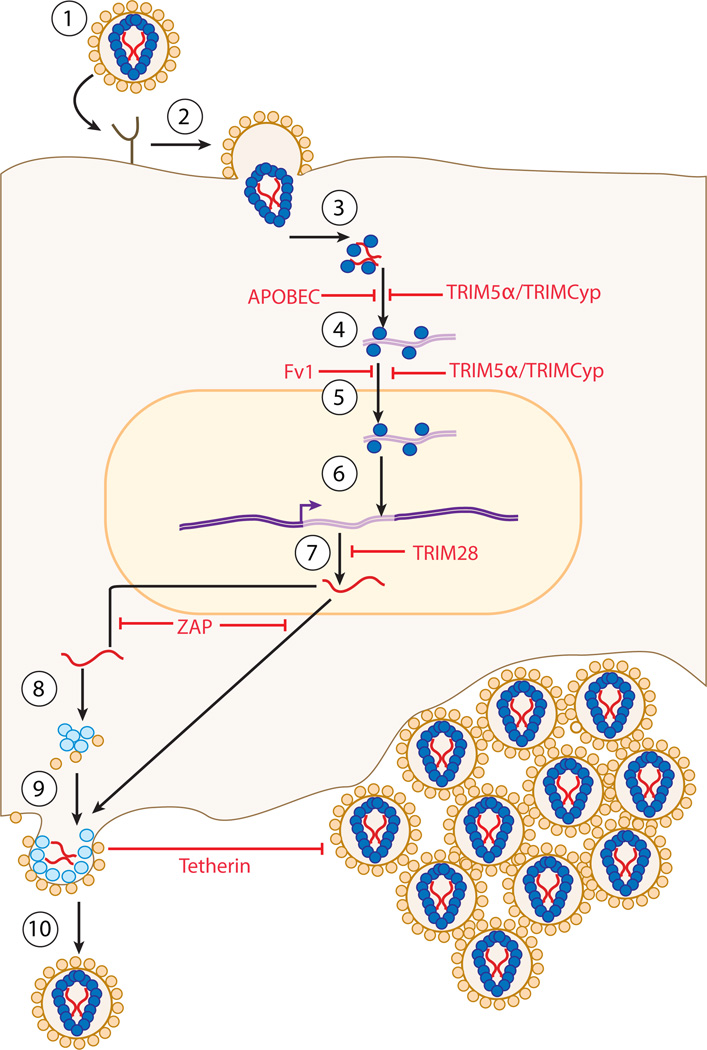Figure 1.
Summary of the retroviral life cycle and points of action of restriction factors. Cartoon showing the simplified life cycle of a retrovirus. Stages of life cycle are numbered and are as follows: 1. Envelope-mediated binding of retrovirus to target cell receptor. 2. Fusion of retroviral envelope and target cell membrane, leading to core viral particle entering cell. 3. Uncoating of core viral particle. 4. Reverse transcription of viral ssRNA genome into dsDNA, and formation of preintegration complex (PIC). 5. Nuclear entry of PIC. 6. Integration of viral genome into target cell genome. 7. Production of new viral RNA genomes and mRNA molecules by transcription. 8. Nuclear export of viral RNA species followed by either translation into viral proteins, or packaging into forming viral particles at a cellular membrane. 9. New translation of viral proteins and RNAs congregating at membrane and induction of membrane curvature as viral particles form. 10. Budding of fully formed viral particles from the membrane, and protease-mediated cleavage of viral proteins, leading to release of the fully mature virion. Dark blue circles denote protease cleaved viral proteins. Light blue circles denote viral proteins that have not been cleaved by protease. Small empty black circles denote viral envelope proteins. Wavy red lines denote viral RNAs; green wavy lines denote viral DNAs. Straight red lines denote point of interference in retroviral life cycle by restriction factors.

